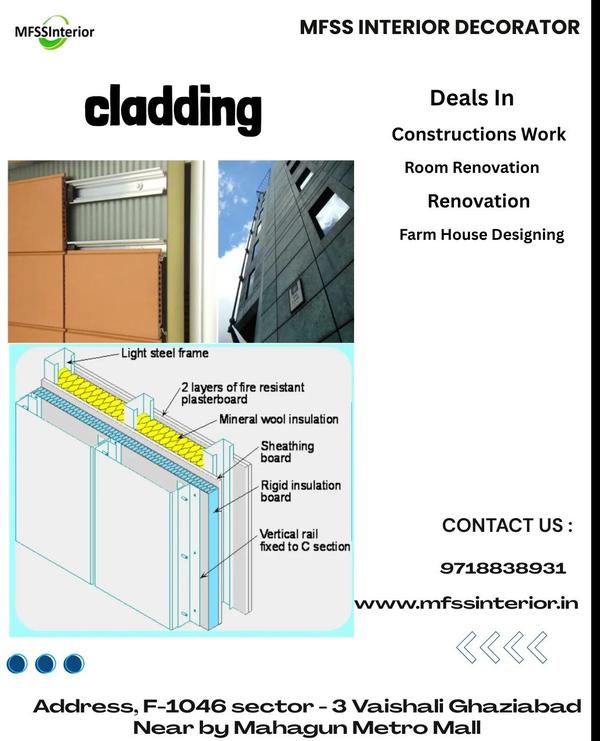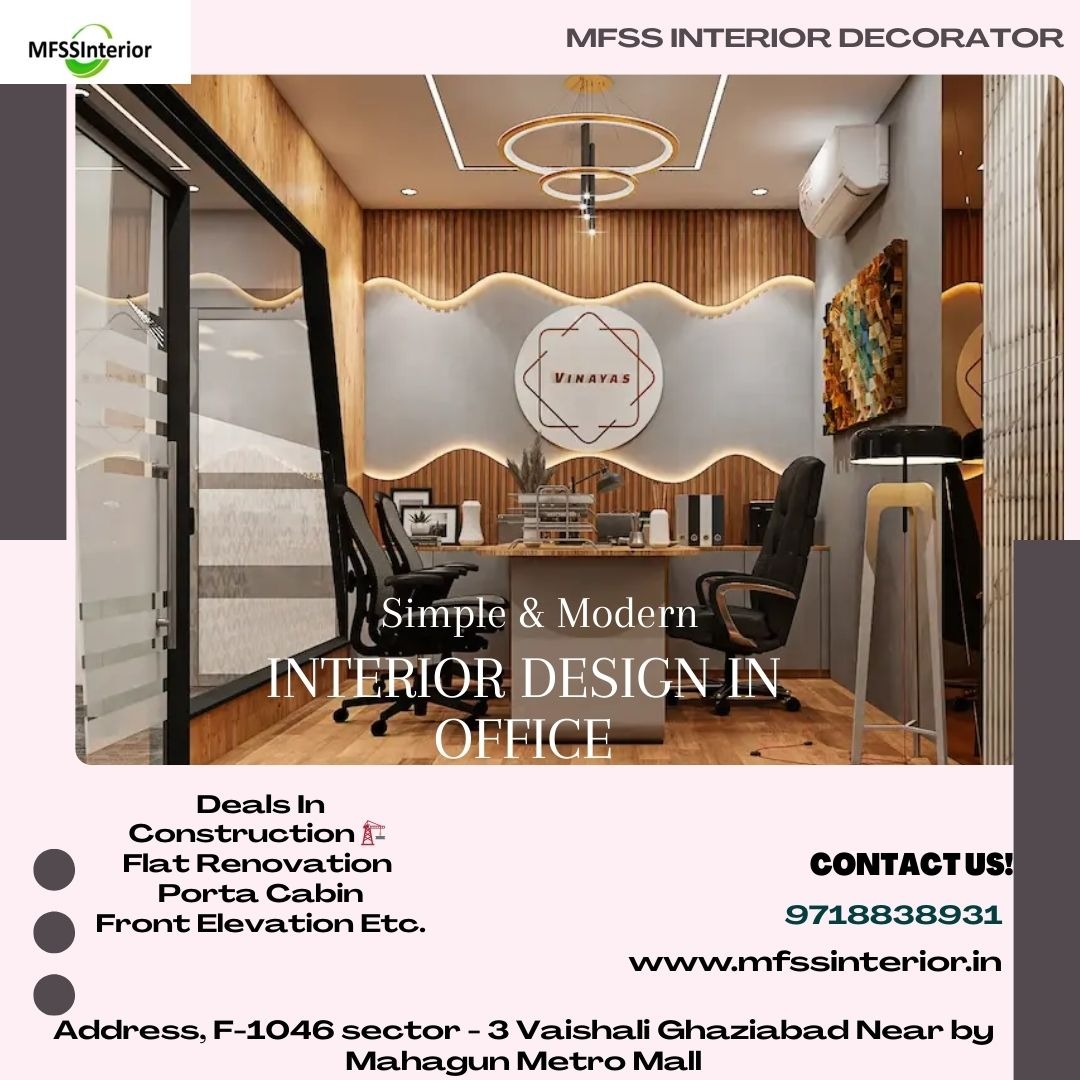
Interior Design In Office Work In Indirapuram Ghaziabad

Office interior design focuses on making workplaces comfortable, functional, and visually appealing while supporting productivity and company culture. It blends creative design with practical planning. Key Elements of Office Interior Design Space Planning Arranging workstations, meeting rooms, breakout spaces, reception, and storage efficiently. Ensuring smooth traffic flow and compliance with safety regulations. Ergonomic & Functional Furniture Choosing comfortable chairs, adjustable desks, and modular furniture. Ensuring workspaces meet ergonomic standards to reduce fatigue and injuries. Lighting Maximizing natural light and using task lighting where needed. Adding ambient and decorative lighting for a pleasant work atmosphere. Color Scheme & Materials Using colors that reflect the company’s brand and influence mood (e.g., blues for calm, greens for creativity). Durable flooring and wall finishes suitable for high-traffic office areas. Branding & Aesthetics Incorporating logos, company colors, and thematic elements into the design. Displaying artwork, motivational quotes, or digital signage. Technology Integration Planning for electrical outlets, internet cabling, screens, and smart devices. Ensuring meeting rooms have AV setups for video conferencing. Acoustics & Privacy Using sound-absorbing materials like carpets, panels, and partitions. Designing quiet zones or phone booths for focused work. Biophilic Design (Nature in the Workplace) Adding indoor plants or green walls for improved air quality and aesthetics. Using natural materials like wood and stone for a calming effect. Roles in Office Interior Design Interior Designers: Concept development, space planning, and material selection. 3D Visualizers: Create digital renderings for clients. Project Managers: Oversee implementation and ensure deadlines and budgets are met. Furniture & Lighting Specialists: Source and customize office decor elements. Site Supervisors: Coordinate construction and finishing work. Skills Needed Software: AutoCAD, SketchUp, Revit, 3ds Max, Photoshop. Knowledge of building codes, ergonomics, and safety standards. Creativity and understanding of workplace trends. Communication and project management skills.
Subscribe for latest offers & updates
We hate spam too.


